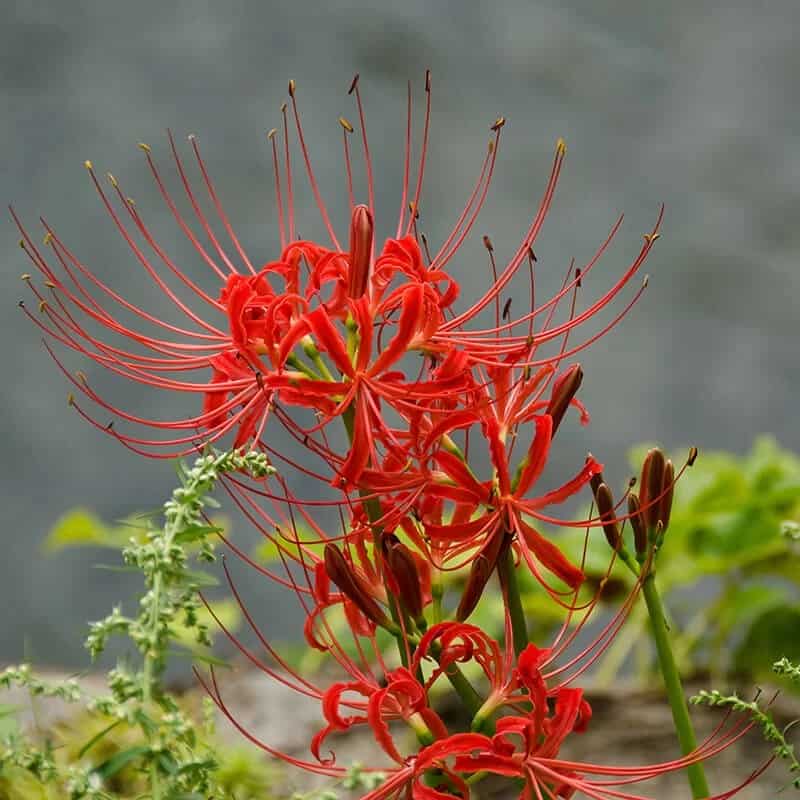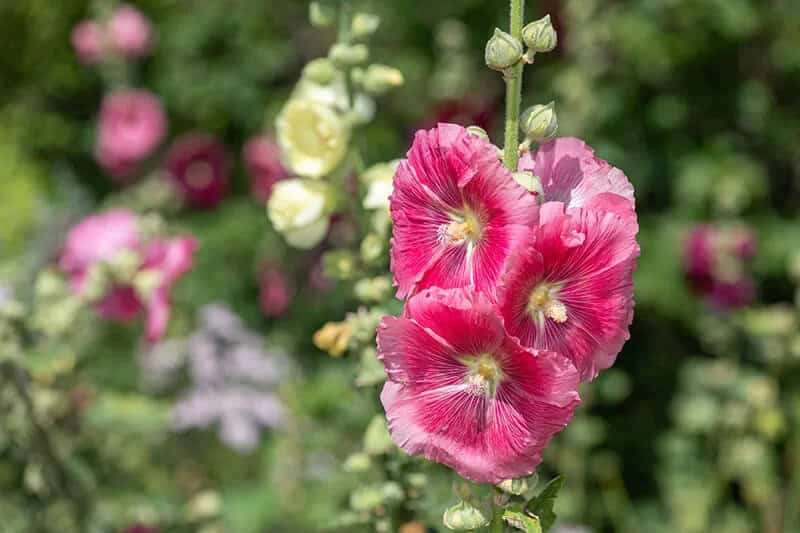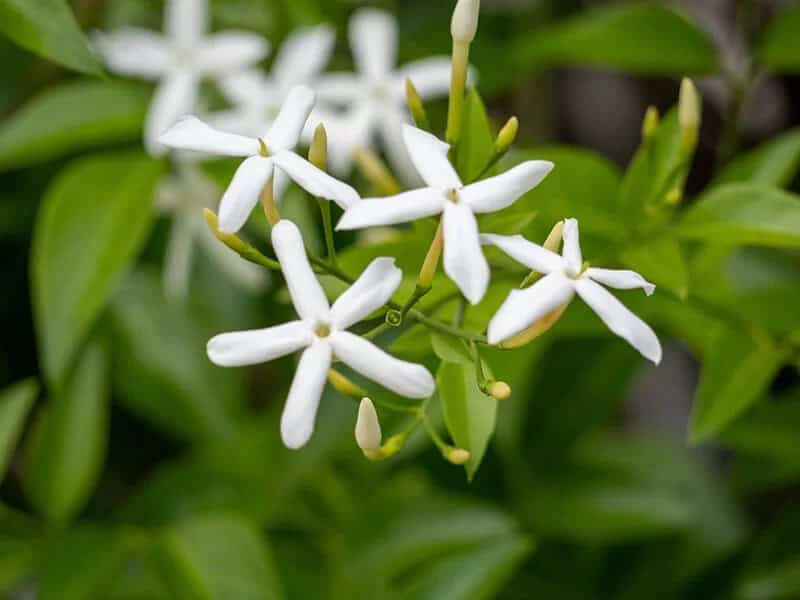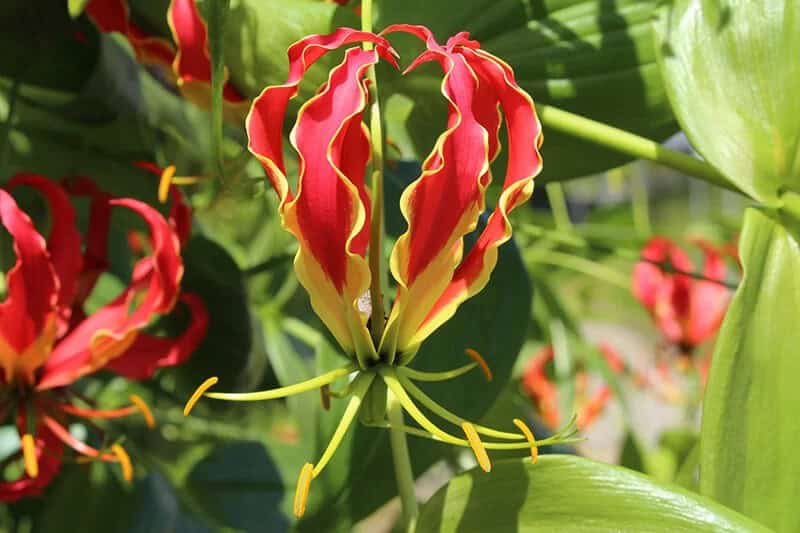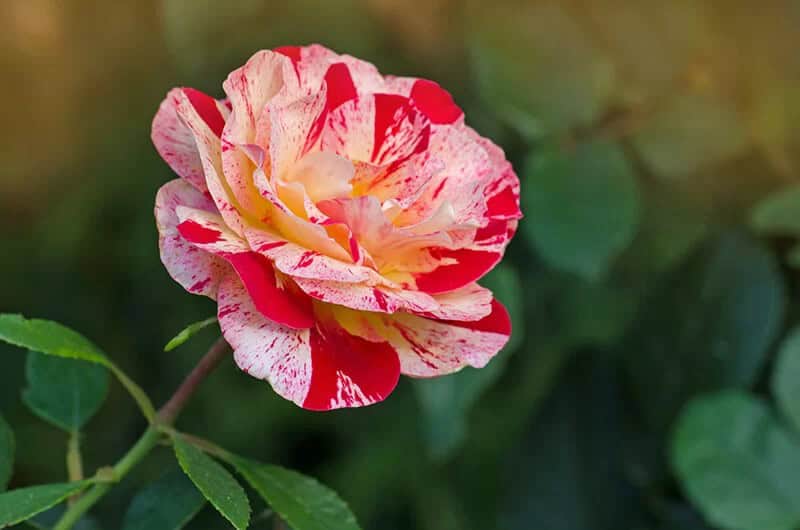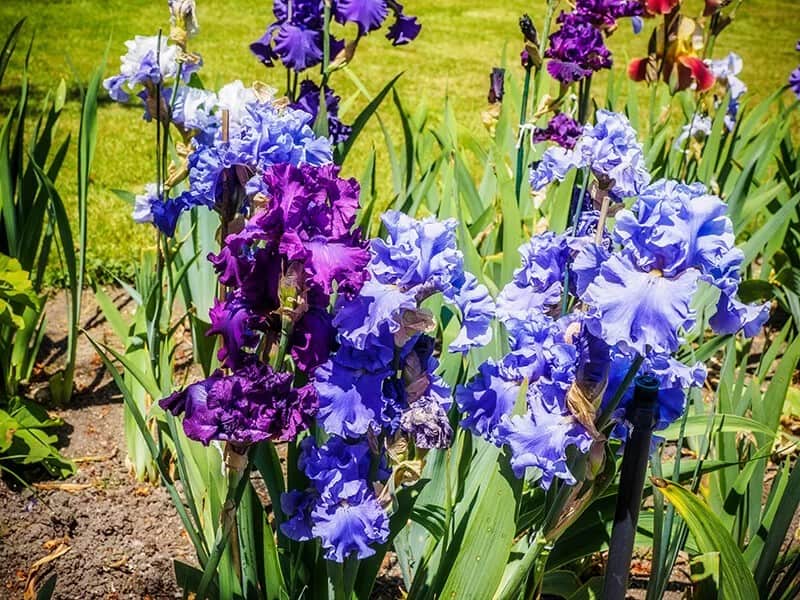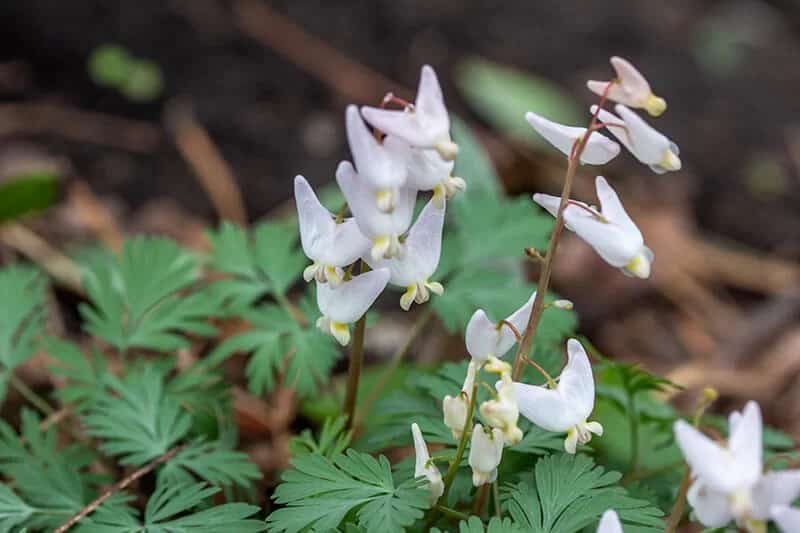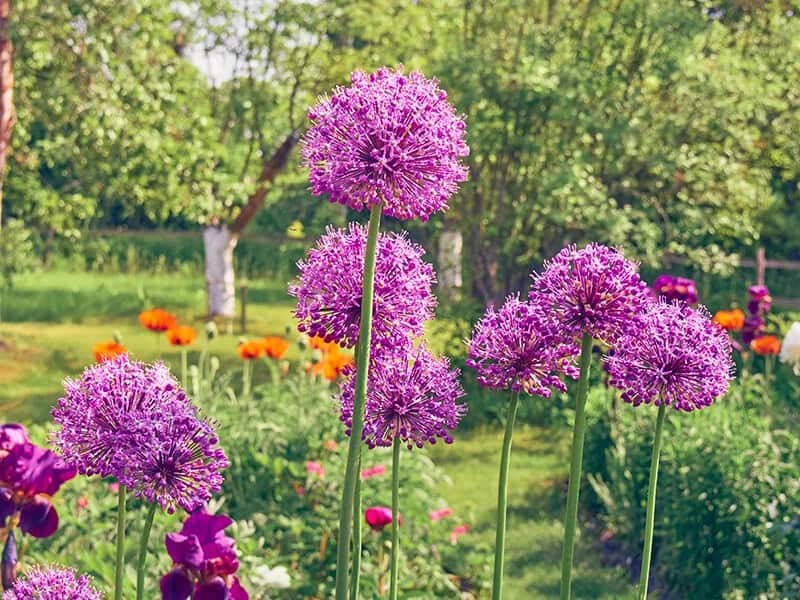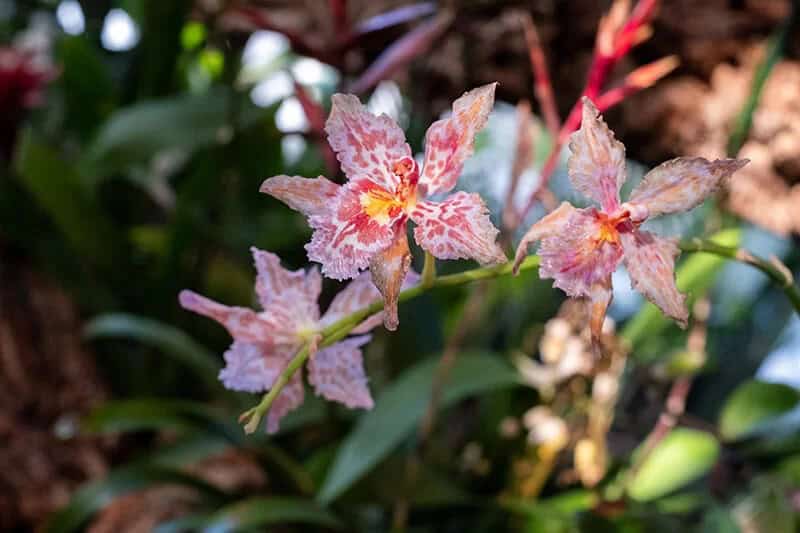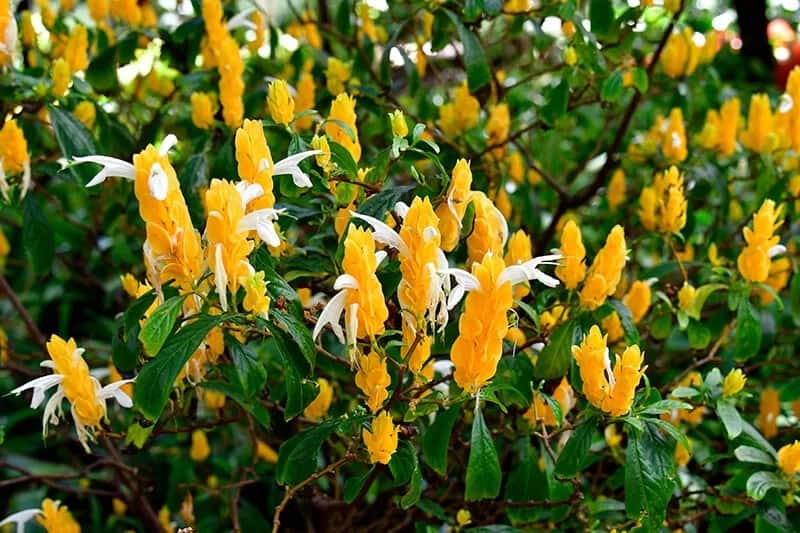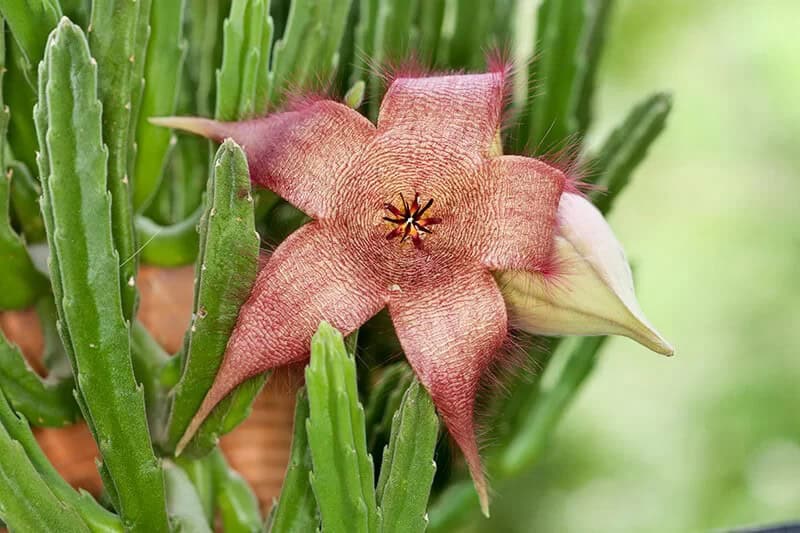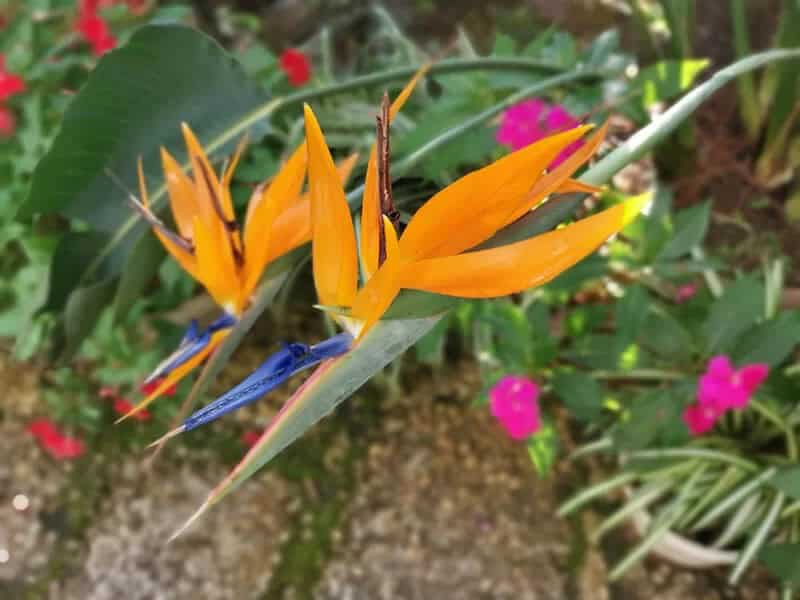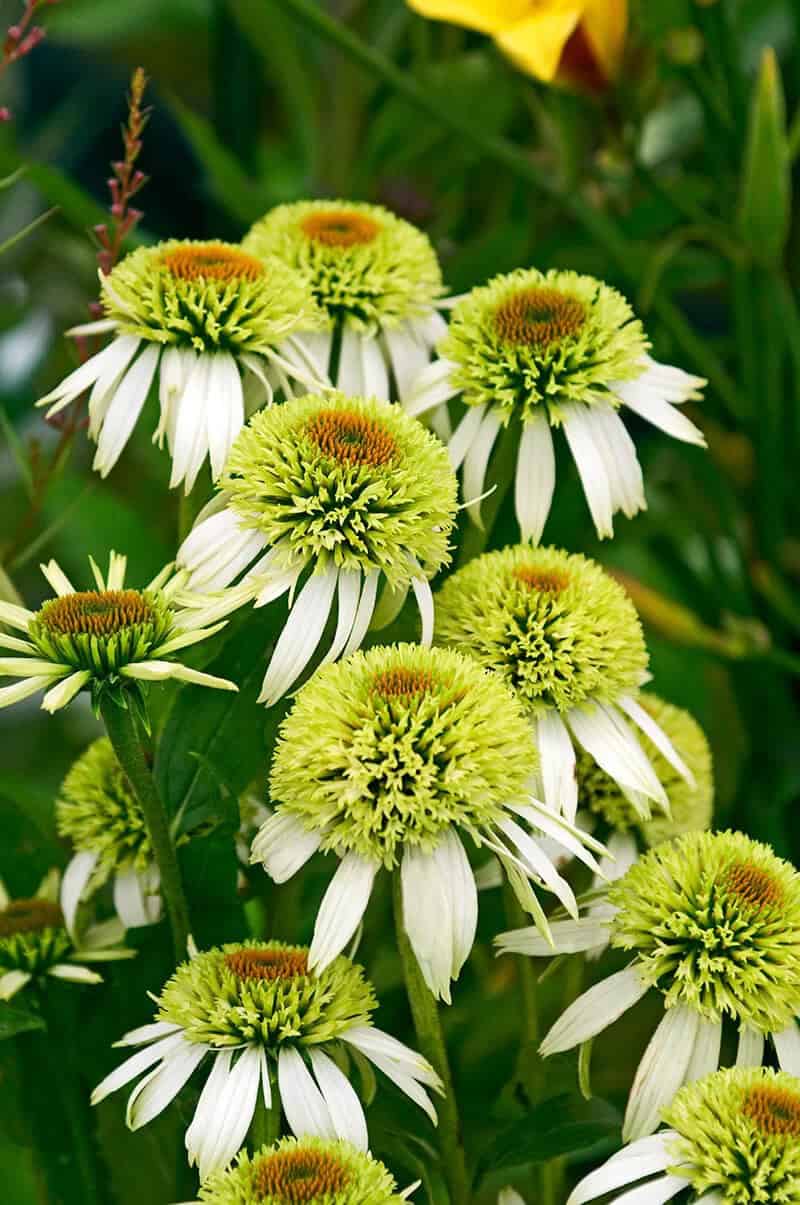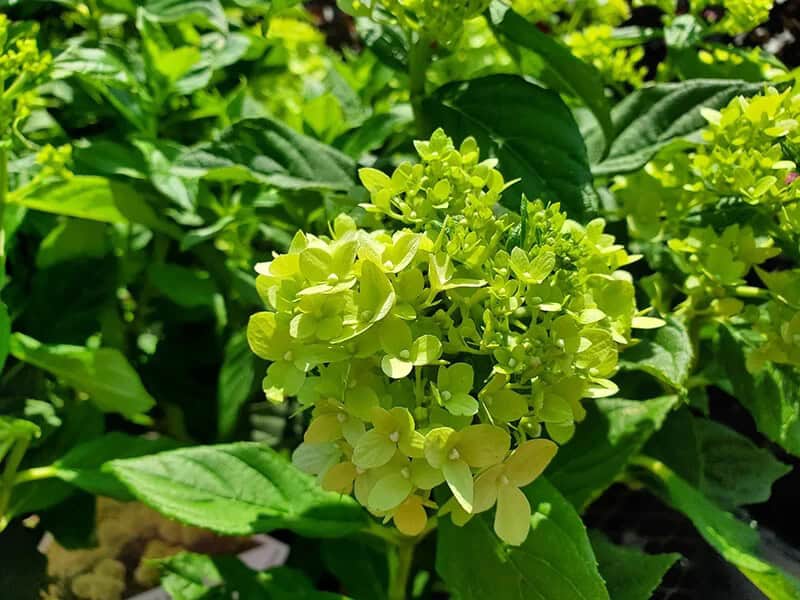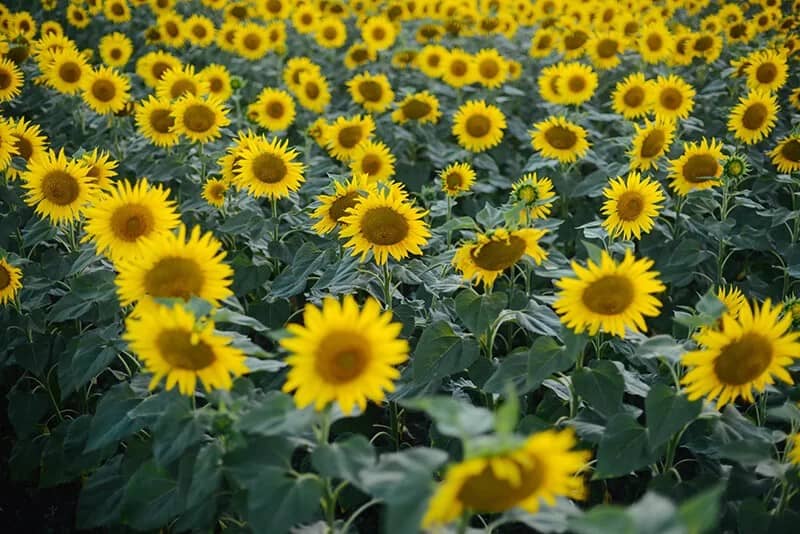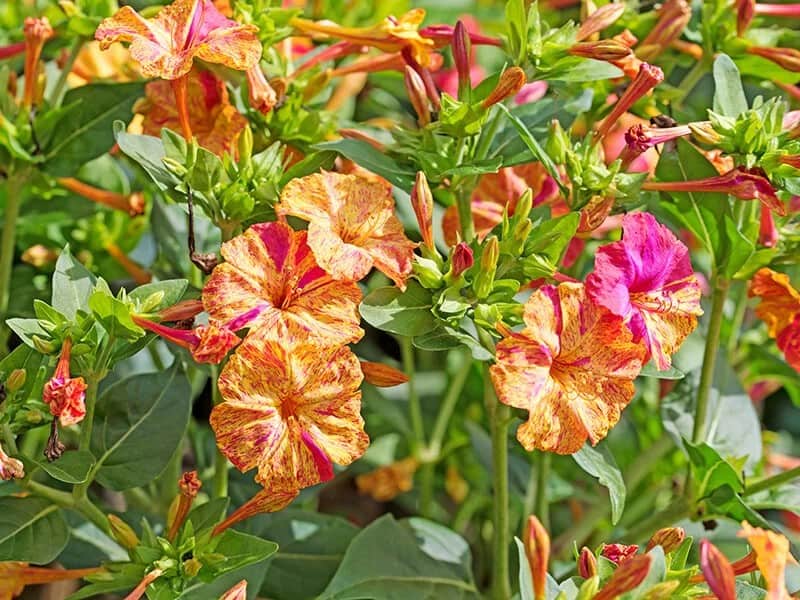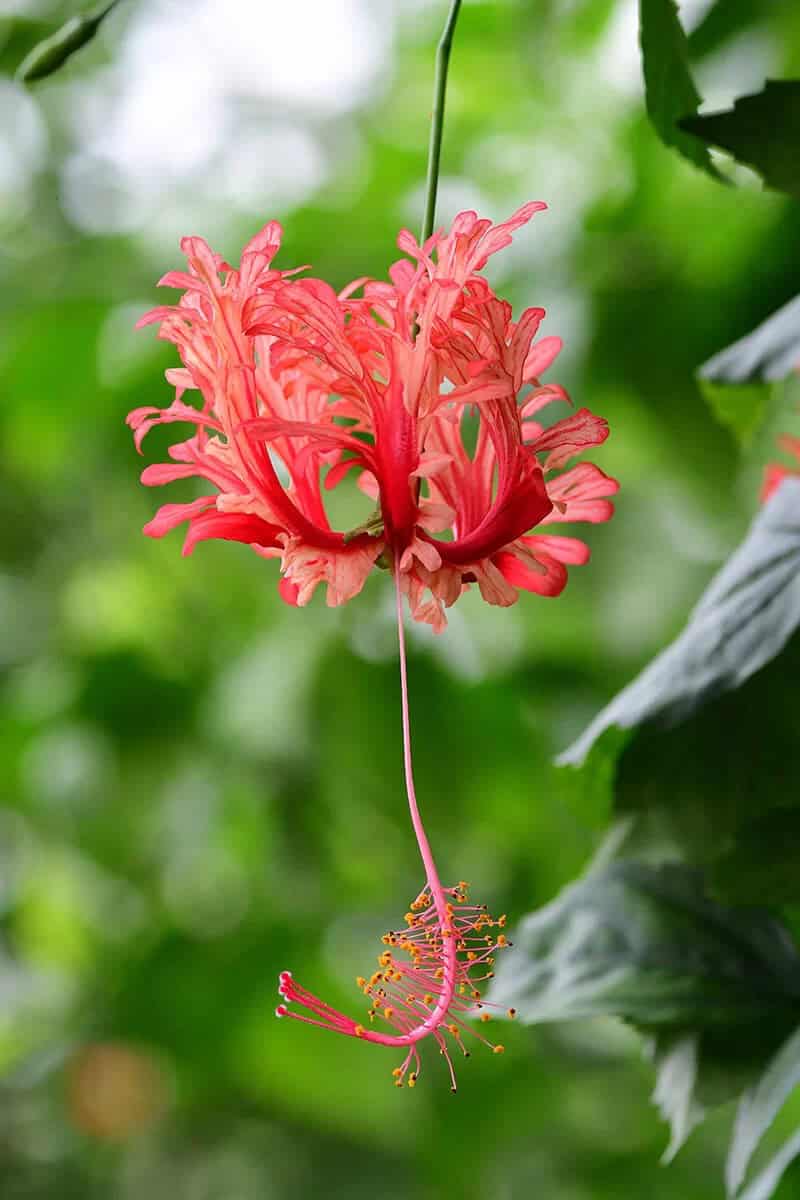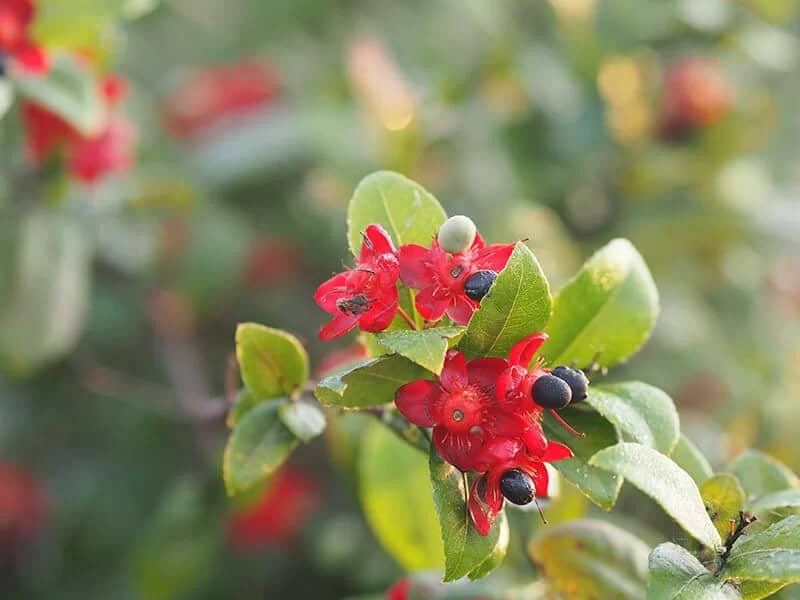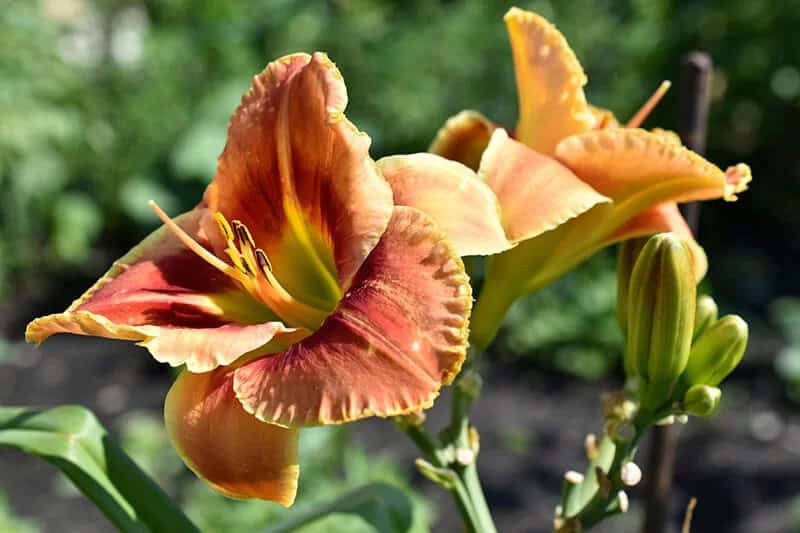Revitalizing your outdoor space with uncommon blooms can be an exhilarating experience, but also a daunting one. The thrill of introducing unexpected flowers can lead to stunning rewards, as visitors are not only captivated by their beauty, but also intrigued by the hidden symbolism and stories behind them.
27 Fun and Unique Flowers to Plant if You Are Ready to Let Your Wild Side Out
Whether you’re a seasoned gardener looking for a change of pace or a newcomer eager to explore the world of botany, it’s easy to get stuck in a rut when it comes to the same old blooms year after year. But fear not! There are countless extraordinary flowers waiting to be discovered, and this list is designed to help you shake things up and bring some fresh excitement to your outdoor space.
Spider Lily (Lycoris Radiata)
The majestic beauty of these flowers is evident just by gazing at photographs. The slender, sweeping stamens will undoubtedly create a stunning visual display in your garden during the late fall season. As these lilies bloom towards the end of summer, they are often linked to themes of departure and new beginnings.
With their medium water requirements, rich soil that drains well, and ability to thrive in zones six through ten under full sun to partial shade conditions, these flowers can add a touch of sophistication to your outdoor space. The blooming season typically falls between August and September.
Eastern Pasqueflower (Pulsatilla Patens)
The eastern pasqueflower’s symbolism extends beyond its stunning appearance, as it represents freedom, Easter joy, and a clear mind. In terms of cultivation, this plant thrives in dry to medium water conditions, with gritty soil that drains well being ideal. Gardeners in USDA hardiness zones 3 to 7 can successfully grow eastern pasqueflower, which requires full sun to bloom. Its blooming season typically occurs from March to April.
What sets this flower apart is its extraordinary silky hairs, which seem to glow when illuminated by morning sunlight. In addition to its aesthetic appeal, the eastern pasqueflower has been used in Native American remedies to alleviate headaches, making it a unique addition to any garden that may also promote mental clarity.
Coneflower (Echinacea ‘Hot Papaya’)
The coneflower, known for its striking features and symbolic significance, has become a staple in many garden landscapes. Its unique charm lies not only in its vibrant colors but also in the meanings it embodies. For instance, it’s believed to guard against sickness, clear the air of negative energies, and represent ambivalence – an intriguing combination that sets it apart from other blooms.
If you’re looking to add some excitement to your garden, consider the ‘Hot Papaya’ variety, which boasts massive double flowers in a bold red-orange hue that’s sure to turn heads. As if its stunning appearance wasn’t enough, this flower also offers protection from sickness – what more could you ask for?
Bee Balm (Monarda ‘Gardenview Scarlet’)
The soothing charm of Bee Balm (Monarda didyma) lies not only in its striking appearance but also in its ability to soothe life’s stings and expel filth from the surrounding environment. This unique flower requires medium to wet water conditions, average soil with good moisture retention, and thrives in growing zones 4 to 9. Bee Balm can tolerate full sun to part shade, making it an adaptable addition to any garden.
Its blooming season typically spans June to August, during which time its intricate flower structure, reminiscent of a sculpture, becomes even more captivating. When planted en masse, this variety, such as ‘Gardenview Scarlet’, attracts pollinators like hummingbirds and adds an irresistible energy to the surrounding space.
Balloon Flower (Platycodon Grandiflorus ‘Komachi’)
The Balloon Flower: A Joyous Addition to Your Garden As you explore the world of unique flowers to plant, it’s hard not to be captivated by the whimsical charm of balloon-shaped blooms. And among these, the Balloon Flower stands out for its extraordinary ability to retain its rounded shape throughout the summer and into fall. One of the best ways to appreciate their tactile delight is to plant them as a border along your garden path.
When it comes to symbolism, this flower embodies good health, youthful friendship, and a long memory. To thrive, however, it requires medium water needs, average soil with excellent drainage, and growing zones between 3 and 8. Be sure to provide it with full sun to part shade and watch as it blooms beautifully from June to August.
Hollyhock (Alcea Rosea ‘Nigra’)
The enigmatic dark hollyhock boasts a rich maroon hue reminiscent of black, setting it apart from its more vibrant counterparts. This striking bloom not only captivates with its deep color but also stuns with its impressive height. When paired with the towering growth habit of the hollyhock, this unusual flower brings an air of moody elegance to any garden.
With a moderate water requirement, average soil that drains well, and tolerance for a range of soil types, this plant is adaptable to many environments. It thrives in full sun and blooms from July to August, making it a unique addition to any floral arrangement.
Star Jasmine (Trachelospermum Jasminoides)
Star jasmine’s delicate, star-shaped flowers bring a touch of elegance and whimsy to any garden. The plant’s friendly demeanor is reflected in its symbolisms, including friendliness, feminine charm, and a sweet disposition. When it comes to growing conditions, star jasmine requires medium water levels, loamy soil with good drainage, and can thrive in USDA zones 8-10. It also needs full sun to partial shade, making it an ideal choice for gardens that receive moderate sunlight.
The blooming season typically runs from May to June, during which time the plant releases a sweet perfume, adding to its charm. Star jasmine’s versatility makes it suitable for use as a groundcover, trained to climb up structures, or used as a low-growing groundcover, allowing gardeners to get creative with their design.
Flame Lily (Gloriosa Superba ‘Rothschildiana’)
The vibrant flame lily, with its captivating beauty and mesmerizing dance-like blooms, demands attention and admiration. This unique flower requires medium watering, rich soil with good drainage, and thrives in USDA zones 8 to 10. Full sun to part shade is also essential for optimal growth. When the flame lily is in full bloom, typically from July to September, it becomes a stunning focal point that can elevate any garden.
As this plant can be challenging to cultivate, it’s an ideal choice for seasoned gardeners looking for a thrilling cultivation experience.
Floribunda Rose (Rosa ‘Jacpurr’ Purple Tiger)
The PURPLE TIGER rose is a unique and stunning bloom that boasts a classic rose form, but with an extraordinary twist. Its petals feature striking purple and white stripes, creating one-of-a-kind masterpieces in each flower. What sets this rose apart is its prolonged blooming season, allowing you to marvel at the beauty of these gorgeous flowers for months on end.
The ideal growing conditions for the PURPLE TIGER rose are medium watering needs, slightly acidic loamy soil with good drainage, and full sun exposure. It thrives in USDA zones 5-9, making it a great addition to any garden or floral arrangement.
Bearded Iris (Iris Germanica)
The allure of bearded irises is undeniable, with their lavish blooms and soft, ruffled petals captivating gardeners for generations. While they come in a wide range of colors, some varieties boast striking black petals that command attention. When in bloom, these majestic flowers are truly showstoppers. As symbols of friendship, dignity, and good news, it’s no wonder bearded irises have earned their place as beloved garden favorites.
For optimal growth, they require medium watering, tolerating drought conditions when necessary. A rich humus soil with good drainage is also essential, along with full sun exposure. This allows them to thrive in growing zones 3 through 10, with a blooming season that typically begins in May.
Double Daffodil (Narcissus ‘Southern Hospitality’)
Double Daffodils: A Unique Twist on a Spring Garden Classic Double Daffodils bring a touch of elegance to any spring garden with their ruffled, frilly centers that set them apart from traditional daffodils. Despite the extra layer of drama, these low-maintenance flowers are just as easy to care for as their standard counterparts. When it comes to symbolism, Double Daffodils convey admiration, youth, and unrequited love, making them a thoughtful gift or addition to any garden.
In terms of growing conditions, Double Daffodils require medium water needs, rich soil with good drainage, and can thrive in zones 6 to 10. They also prefer full sun to part shade, with the blooming season typically occurring from March to April.
Pantaloon Flower (Dicentra Cucullaria)
The enchanting pantaloon flower, characterized by its unique upside-down pant leg-like shape, brings a playful touch to any garden. Despite not boasting vibrant colors, it adds a whimsical charm that’s hard to ignore. As the cousin of the popular bleeding heart, this springtime bloomer is sure to leave a lasting impression.
With a growth range spanning from zones 3 to 7, and thriving in rich soil with good drainage, part shade to full shade conditions, and medium water needs, it’s relatively low maintenance. Come March, this delightful flower will burst forth with new life, its symbolism tied to fresh starts, athletic prowess, and the swift passage of time.
Ornamental Onion (Allium Giganteum)
The ornamental onion, with its Latin name translating to ‘spicy like garlic,’ is a striking addition to any garden. Its softball-sized flowers are spherical and eye-catching, making it a perfect focal point. In Himalayan folk medicine, the plant is used to fortify the body for winter, and when added to a garden in late spring, it can help rejuvenate the space before the warmer months arrive.
Toad Lily (Tricyrtis ‘Blue Wonder’)
Despite its somewhat unflattering name, the toad lily is a true gem in any shade garden. Its intricate spotted pattern of cool violet-blue hues against creamy white petals creates a mesmerizing display that draws the eye. Due to their small stature, these flowers are ideally suited for planting in areas where they can be admired up close. In terms of its symbolism, the toad lily is often associated with themes of bliss, good luck, and forgiveness.
For optimal growth, this plant requires medium to wet soil conditions, slightly acidic fertile soil with good drainage, and is hardy in USDA zones 5 to 8. It thrives in part shade to full shade environments and blooms from August to October.
Lollipop Flower (Pachystachys Lutea)
The Lollipop Flower boasts an unmistakable charm, courtesy of its delicate white blooms and striking yellow columns. In its natural habitat, this beauty can thrive to the point of becoming a lush hedge. For gardeners in cooler temperate climates, it’s an excellent choice for adding a touch of tropical flair to annual borders. With medium water needs, fertile soil that drains well, and full sun, this flower requires conditions similar to those found in zones 10-11.
Its blooming period typically spans from June to August, making it an attractive addition to any garden seeking a splash of color during the warmer months.
Checquered Lily (Fritillaria Meleagris)
The chequered lily is renowned for its extraordinary coloration, featuring a striking combination of muted purple and cool white hues that evoke a chessboard pattern on the petals. Standing at under 12 inches tall, these delicate bell-shaped blooms are ideal for mass planting or placement near walkways and seating areas to showcase their unique beauty. The plant requires medium water needs, thrives in fertile soil with good drainage, and can tolerate a range of growing zones from 3 to 8.
Full sun to partial shade is also suitable, while blooming typically occurs in April.
Zulu Giant (Stapelia Gigantea)
The Zulu giant flower stands out for its striking, starfish-like pale blooms. But its unconventional appeal doesn’t stop there. This unusual bloom also has a fascinating method of pollination – it relies on flies. To attract these pollinators, the plant emits an uninviting aroma. As such, when planting, consider the location to ensure the flower’s unique fragrance can effectively draw in flies.
In terms of its needs, this flower thrives in dry to medium soil with good drainage and full sun exposure. It tolerates drought well, but a sandy soil is ideal. The Zulu giant flower is suitable for USDA growing zones 9-10, and typically blooms from September to October.
Bird of Paradise Flower (Strelitzia Reginae)
The striking bird of paradise flower is renowned for its capacity to create a dramatic architectural centerpiece. Its one-of-a-kind blooms boast an intriguing combination of asymmetrical energy, vibrant orange hues, and soothing blue tones. For those who relish a challenge, cultivating this tropical beauty can add a touch of exotic flair to any outdoor space.
This stunning flower is characterized by its regal symbolism, representing magnificence, faithfulness, and revitalization.
It thrives in medium water conditions, tolerating drought but excelling with consistent moisture. The loamy soil it prefers should have excellent drainage to prevent root rot. Gardening enthusiasts can grow this marvel in USDA zones 10-12, where it will bask in full sun to partial shade.
As the seasons change, the bird of paradise flower blooms seasonally, providing a burst of color and interest in the garden.
Hedgehog Coneflower (Echinacea Purpurea ‘Coconut Lime’)
In the realm of horticulture, uncovering an uncommon green bloom is akin to stumbling upon a precious gem. The striking appearance of these flowers features a lime-green central cone resembling a hedgehog, surrounded by white, ray-shaped petals. As if transported from a tropical haven, this prairie wildflower can imbue your garden with a sense of exotic charm.
Notably, this plant is said to possess symbolism related to alleviating pain, offering protection against snakes, and promoting longevity. Furthermore, it thrives in conditions characterized by moderate water needs, tolerating drought; its soil requirements include well-draining average soil that can also accommodate clay-based substrates. The ideal growing zones for this species span from 3 to 8.
In terms of lighting, the plant flourishes under full sun or partial shade.
Its blooming period typically unfolds between June and August, making it an attractive addition to any garden seeking a pop of color during these summer months.
Panicle Hydrangea (Hydrangea Paniculata ‘Renhy’ Vanilla Strawberry)
The Vanilla Strawberry panicle hydrangea variety stands out from others with its extraordinary color-changing blooms. Initially, the flowers emerge in a soft, creamy vanilla white hue. As they mature, they gradually deepen into a rich strawberry pink tone. This distinctive characteristic makes it an ideal choice for those seeking a plant that will provide visual interest throughout the seasons.
In terms of growing conditions, this variety requires medium watering, fertile soil with good drainage, and is suited to zones 3-8. It thrives in full sun to partial shade and blooms from July to September, offering a unique and captivating display.
Sunflower (Helianthus Annuus ‘Teddy Bear’)
Sunflowers are a beloved staple in many US gardens, offering a unique charm with their bright yellow petals. One variety that stands out from the crowd is ‘Teddy Bear’, boasting an adorable fluffy double flower. What sets this cultivar apart is its more compact stature, making it accessible and enjoyable for both kids and adults. This sun-loving flower thrives in well-draining soil, tolerates some drought, and can be grown in a range of climates from 2 to 11 growing zones.
When the blooms arrive in July and August, you’ll be treated to a stunning display that’s sure to brighten up any outdoor space.
Marvel of the World (Mirabilis Jalapa)
Marvelous dappled petals are only one aspect of what makes these extraordinary flowers an excellent addition to your outdoor space. A peculiar characteristic of Marvel of the world flowers is their consistent afternoon blooming routine, with the vibrant blooms closing again in the morning. When planted as a standalone specimen or a lush hedge, this variety is particularly effective at drawing hummingbirds to your garden.
Fringed Rosemallow (Hibiscus Schizopetalus)
Surround your outdoor space with the mesmerizing beauty of fringed rosemallows. These evergreen shrubs are a great way to add some drama to your garden. With their lacy petals arching back and stamen drooping in a daring display, these unique flowers are sure to turn heads. If you live in USDA Hardiness Zones 10-11, with medium water needs and fertile soils that drain well, you can enjoy the fringed rosemallows as a striking hedge or add them to your existing garden for a pop of color.
They require full sun to thrive and will bloom seasonally, making them a great choice for adding some visual interest to your yard.
Shasta Daisy (Leucanthemum × Superbum ‘Beaute Nivelloise’)
The Shasta daisy, with its snowy-white petals and sunny yellow eye, embodies innocence, loyalty, and a free-spirited nature. This particular variety stands out from the crowd, boasting untamed beauty that adds a touch of whimsy to any garden setting. Growing requirements are relatively straightforward: it thrives in dry to medium soil conditions with excellent drainage, tolerates drought, and prefers average sunlight with full sun being ideal.
Blooming season typically falls between June and August. With its adaptability to growing zones 4 to 9, this daisy variety is an excellent choice for those seeking a low-maintenance yet visually striking addition to their outdoor space.
Firewheel (Gaillardia Pulchella)
The Firewheel plant, with its unique trumpet-shaped petals, is a vibrant addition to any garden. Its symbolism is rooted in good luck, relief, and clear vision, making it a popular choice for those seeking a boost of positivity. This low-maintenance beauty thrives in dry to medium soil conditions, tolerating drought and poor soil types. It’s an ideal option for those with sandy soil and good drainage. Firewheel is hardy and can be grown in zones 2 to 11.
In full sun, this plant bursts into bloom from June until the first frost, creating a stunning display of bright flowers that will remain vibrant all season long.
Mickey Mouse Bush (Ochna Serrulata)
The enchanting Mickey Mouse bush is not only a delight for the eyes, but also a symbol of wild and strong emotions, embodying vitality. This charming plant thrives in medium water conditions, tolerating droughts with ease. It requires fertile soil with good drainage to grow its best. Gardeners in USDA hardiness zones 9 to 11 are lucky enough to enjoy this beauty’s blooming season, which typically runs from May to June.
As the seasons change, the bush’s yellow flowers unfurl, followed by a stunning transformation into intense red petals and round fruits that resemble Mickey Mouse himself – a feature sure to captivate children’s imaginations.
Tetraploid Daylily (Hemerocallis ‘Golden Tear Drops’)
Daylilies may appear elaborate, but they’re actually quite easy-going. Requiring only moderate effort and skill, it’s no wonder they’re among the most popular perennial flowers. One of the best things about daylilies is their adaptability to different growing conditions. They thrive in zones 3-9, with average soil that drains well and full sun to partial shade.
If you want to add some excitement to your garden, look for cultivars featuring unique characteristics like ruffled petals or multiple hues. The blooming season typically falls between May and June.
Discover the 27 Most Unique Flowers to Plant this Year for an Unforgettable Garden
As you tend to your botanical creations over time, you’ll naturally evolve as a gardener. While some may forever cherish familiar blooms, it’s essential to adapt and grow alongside the changing seasons. This might manifest in a complete landscape overhaul or a gradual introduction of new flora that supplants the old. Though embracing change can be daunting, the prospect of embarking on a fresh journey is equally thrilling.
For those hesitant to venture into uncharted territory, you can start by introducing a new variety of an old favorite, such as roses, hydrangeas, or daffodils. Conversely, for gardeners eager to take on a new challenge, there are numerous whimsical flowers that offer stimulating obstacles and plentiful rewards.
